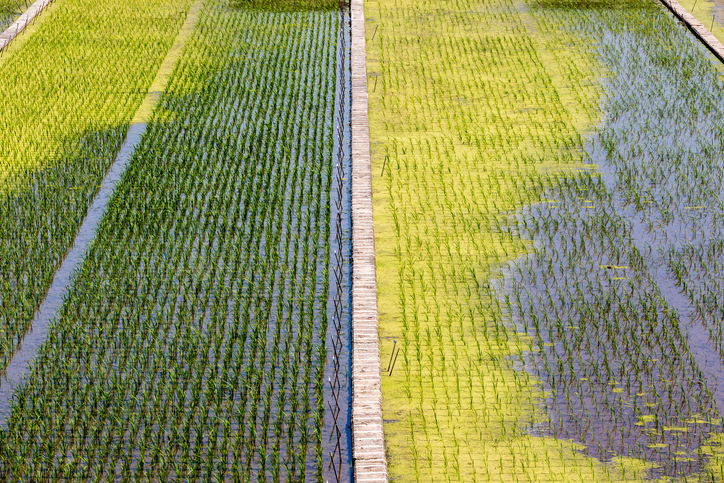Agriculture employs nearly 7 per cent of the country’s workforce
By Diego Flammini
News Reporter
Farms.com
As athletes from nearly 100 countries descend on South Korea to participate in the Winter Olympics, Farms.com is taking a closer look at the host nation’s agricultural industry.
South Korea’s projected GDP for 2017 is US$1.4466 trillion, according to The World Bank.
Agriculture accounts for about 2.6 per cent of the country’s GDP, or approx. US$37 billion
The country’s labour force is comprised of about 25 million people, according to The World Brank.
And about 6.4 per cent of the work force, or 1.6 million people, are employed within the agricultural sector.
When it comes to land, South Korean farmers cultivate 17,560,000 hectares (43,391,704 acres) of land. And most of their production based around four crops.

South Korean rice field
Photo: Victoria Chekalina/iStock/Getty Images Plus
Producers harvest 1.6 tonnes of soybeans per hectare, 3.4 tonnes of wheat per hectare and 4.9 tonnes of corn per hectare. South Korea’s top crop is rice, and producers harvest about 5.4 tonnes per hectare, according to The Organisation for Economic Co-operation and Development (OECD).
South Korea’s meat consumption is also good news for its livestock producers.
Consumers eat 10.3 kg of beef and veal per capita, 16.9 kg of poultry per capita, and 28.3kg of pork per capita, according to the OECD.
And South Korea is a notable exporter of agri-food goods to the United States and Canada.
The United States imported US$519 million worth of agricultural commodities from South Korea in 2016, according to the Office of the U.S. Trade Representative.
The top South Korean agri-food exports to the U.S. were:
- Processed fruit and vegetables - $81 million
- Snack foods - $49 million
- Other fresh fruit - $31 million
- Fresh vegetables - $17 million
- Dairy products - $16 million
In 2015, Canada imported $89 million worth of South Korean agri-food products, according to Agriculture and Agri-Food Canada.
The top South Korean agri-food exports to Canada in 2015 were:
- Prepared fruit - $15 million
- Prepared pasta - $11 million
- Bakery products - $7 million
- Non-alcoholic beverages - $6 million
- Mushrooms - $4 million
Top photo: South Korean flag
Photo: visual7/iStock/Getty Images Plus